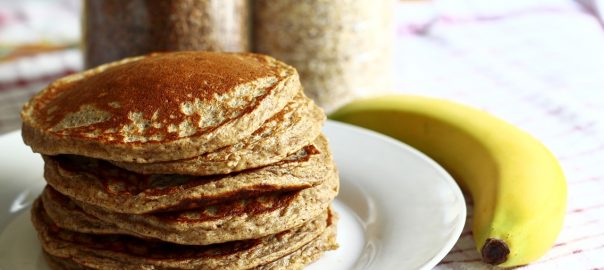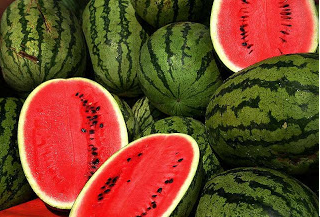I recently made a batch of Christine's Crockpot Granola. I really like making it as it's very easy and it tastes great. While my overnight crockpot cereal is a huge hit you can only make enough for a couple of days. With the granola I can make enough for a week or more (depending on how fast we eat it). I posted the fact that I was making a batch of granola on FaceBook and got a comment from Sandy who didn't know that you could make that in a crockpot. Well folks, yes you can. You can actually make a lot of things in a crockpot, one of the reasons I love mine so much.
My crockpot history
I own two. A small 2 quart and a larger 5 quart. I've considered getting a 6 quart but have no idea where I would store it in my rather small kitchen. First things first, let's clear up the terminology. A crockpot is the same thing as a slow cooker. Crockpot is simply a brand name from the Rival Corporation. Slow cooker is what everyone else calls it because crockpot is trademarked. I call mine a crockpot because I happen to own a Rival brand and that's what I've been calling it for 30 years.
I got my first crockpot, which is my 5 quart when I was in college (and yes, I'm still using it all these years later, that sucker works like a charm). I went to a college where you needed to feed yourself on the weekends because the kitchen closed down. After a couple of weeks as a freshman I called my Mom and told her that I needed a hotpot and would she please buy me one. She asked me what I wanted it for. I said to make soup, sauces and things like that. I came home a few weeks later and there was a crockpot sitting on my bed. I was, needless to say, thrilled. She asked if that was what I wanted. I replied that I had been looking for a hotpot which cost about $6. She offered to return the crockpot and buy me a hotpot (better deal for her). I hugged the box to my chest and announced that I would definitely be able to use this. And indeed I did. For four years I was very popular on the weekend as several of us would pool our food and make soups or a huge pot of spaghetti sauce and eat together. It was great.
After I got married I learned that a crockpot is a lifesaver when you have two working professionals. You come home and dinner is ready. It became one of our most used kitchen appliances. Then we started having kids and it became even more important to plan meals that would be simple, easy and fit into our increasingly busy schedule. Now we're empty nesters but our crockpots still get used regularly and are one of my favorite time saving tools.
Dry cooking in a crockpot
Dry cooking in a crockpot can be tricky. That's because the point of a crockpot is to seal in moisture. This reduces the amount of moisture you need to cook with and creates a slow braising effect. You need to adjust for dry/low moisture recipes; one trick is to leave a wooden spoon in the crock propping the lid open. You also need to make things that won't burn or stick. Snack mixes are a good choice. You get a tasty, crunchy treat where you control the salt, sugar, fat and flavor content without all of the chemicals, preservatives and artificial colors of store bought snack mixes. Although I use cereals as the base for these mixes I tend to buy only cereals that do not have any objectionable ingredients. I also use raw or soaked nuts and add sea salt as needed for flavor. I prefer not to use roasted nuts because they are not as healthy for you.
Here are our favorites:
Crockpot Tropical Snack Mix
2017-04-30 11:27:29
- 3 C. rice squares cereal
- 2 C. oat squares cereal (look for gluten free)
- 1 C. dried banana chips, unsulfured
- 1 C. dried pineapple, unsulfured
- 1 C. macadamia nuts, raw and unsalted
- 1 C. shredded coconut, unsulfured and unsweeteend
- 1/2 C. coconut oil, organic, melted
- 1 T. honey, raw and local preferred
- 1 t. cinnamon
- 1 T. sucanat
- 1/2 t. sea salt
- Mix all ingredients into the crockpot
- Turn it on low for 3-4 hours, propping the lid open with a wooden spoon
- Stir every 30-40 minutes
- When it is done (the mixture seems very dry), turn off the crockpot, uncover and let the mixture cool completely in the crockpot
- Store in an airtight container
The Ingredient Guru, Mira Dessy https://theingredientguru.com/
Crockpot Tex Mex Snack Mix
2017-04-30 11:32:13
- 3 C. corn squares (organic and low sugar)
- 2 C. rice squares
- 2 C. corn chips (organic)
- 1 C. pecans or walnuts, raw
- 1 stick melted butter (organic)
- 1/2 t. hot sauce
- 1 T. Penzey's Taco seasoning
- Mix all ingredients into the crockpot
- Turn on low for 3-4 hours, propping the lid open with a wooden spoon
- Stir every 30-40 minutes
- When done (the mixture seems dry), turn off, uncover, and let cool completely in the crockpot
- Store in an airtight container.
The Ingredient Guru, Mira Dessy https://theingredientguru.com/
Crockpot Asian Snack Mix
2017-04-30 11:44:12
- 4 cups rice squares cereal
- 1½ cups sesame crackers
- 1 C. cashews
- 1 C. dried peas with no artificial color (these are hard to find)
- 1 stick melted organic unsalted butter
- 1 T. Tamari sauce
- 1 t. Chinese five spice
- 1/2 t. sea salt
- Mix all ingredients into the crockpot
- Turn it on low for 3-4 hours, propping the lid open with a wooden spoon
- Stir every 30-40 minutes
- When it is done (the mix seems dry) turn off the crockpot, uncover and let the mix cool completely in the crockpot
- Store in an airtight container
The Ingredient Guru, Mira Dessy https://theingredientguru.com/
Crockpot Curried Snack Mix
2017-04-30 11:45:37
- 4 C. rice squares cereal
- 1 C. cashews, raw and unsalted
- 1/2 C. chopped walnuts, raw and unsalted
- 1/4 C. candied ginger, diced finely
- 1 C. shredded coconut, unsulfured and unsweetened
- 1 t. curry powder
- 1/2 C. ghee
- 2 t. Tamari sauce
- 1/2 t. sea salt
- Mix all ingredients into the crockpot
- Turn it on low for 3-4 hours, propping the lid open with a wooden spoon
- Stir every 30-40 minutes
- When it is done (the mix seems dry) turn off the crockpot, uncover and let the mix cool completely in the crockpot
- Store in an airtight container
The Ingredient Guru, Mira Dessy https://theingredientguru.com/





